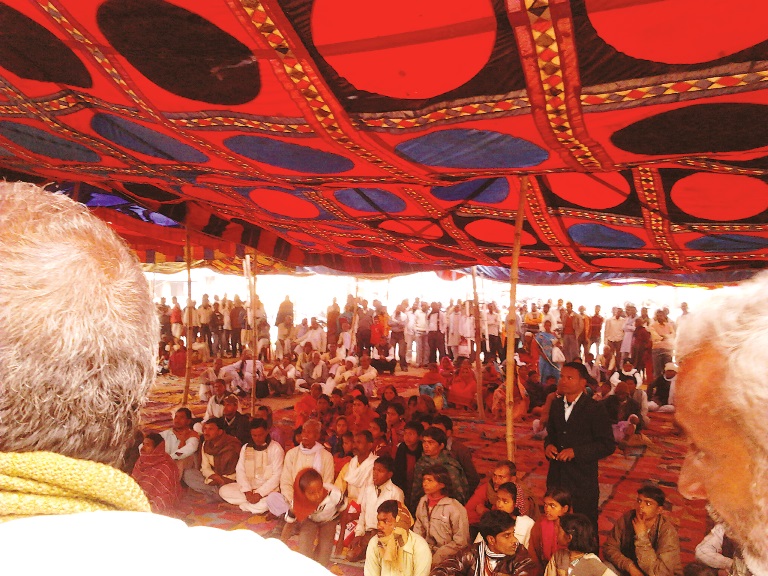A three-day fair is held at the site of martyrdom of ‘Shaheed’ Jagdev Prasad in the Kurtha block of Arwal district of Bihar every year from his birth anniversary 2 February to 5 February. This fair is known as Shaheed Jagdev Mela. The event is different from other traditional fairs of Bihar in many ways. It has become a means of recalling the principles and thoughts of a mass leader right at the site of his martyrdom on his birth anniversary.
People from Uttar Pradesh, Madhya Pradesh, Chhattisgarh, Maharashtra, Punjab, Haryana, Delhi, Himachal Pradesh and West Bengal visit the fair. But there must be hardly a village in Arwal, Jehanabad, Patna, Ara, Buxar, Bhabua and Rohtas districts from where at least one person does not visit the fair. In February this year, almost all political parties remembered the martyr by installing huge hoardings, banners and posters. But there was hardly any mention of his thoughts and principles. Only in Kurtha block were the slogans of “Sau Mein Nabbe Shoshit Hain, Nabbe Bhag Hamara Hai” (Ninety of the hundred are exploited, our share is 90 per cent) and “Ab Kee Sawan-Bhadon Mein, Gori Kalaiyan Kado Mein” (In the coming Monsoon, the fair wrists [of upper-caste women] will be soiled [working in the fields] …)

The Kurtha area is the birth place and the arena of Jagdev Babu’s work and death. It was at the Kurtha block office that on 5 September 1974, Jagdev Babu and Laxman Chaudhary, a Dalit student, fell to the bullets of ‘savarna’ goons and the police. Since then, the place has become a centre of pilgrimage for the followers of Jagdev Babu.

This year the key attraction of the fair was the “Pakhand Mitao” (End Hypocrisy) exhibition, which was inaugurated by Arun Gupta, President of the Bihar Arjak Sangh. On all three days, cultural shows aimed at awakening the people were organised. Folk singers and poets from the neighbouring states told the story of Jagdev Babu’s life and struggles in verse and tried to understand and make others understand the injustices being perpetrated on the Bahujans. Through “Alha”, “Birha”, poets’ meets and magic shows, the truth of the customs and beliefs that have struck deep roots among the Bahujans was exposed. Singer Babita Kumari’s lively presentation of the song ‘Kab Hoyee Pura Shoshit Samaj Ke Sapanwa’ (When will the dream of the exploited class come true) gave the message of optimism. Shoshit Samaj Dal National President Professor Jairam Pratap Singh chaired the inaugural function.
Published in the March 2013 issue of the Forward Press magazine
Forward Press also publishes books on Bahujan issues. Forward Press Books sheds light on the widespread problems as well as the finer aspects of the Bahujan (Dalit, OBC, Adivasi, Nomadic, Pasmanda) community’s literature, culture, society and culture. Contact us for a list of FP Books’ titles and to order. Mobile: +919968527911, Email: info@forwardmagazine.in)





